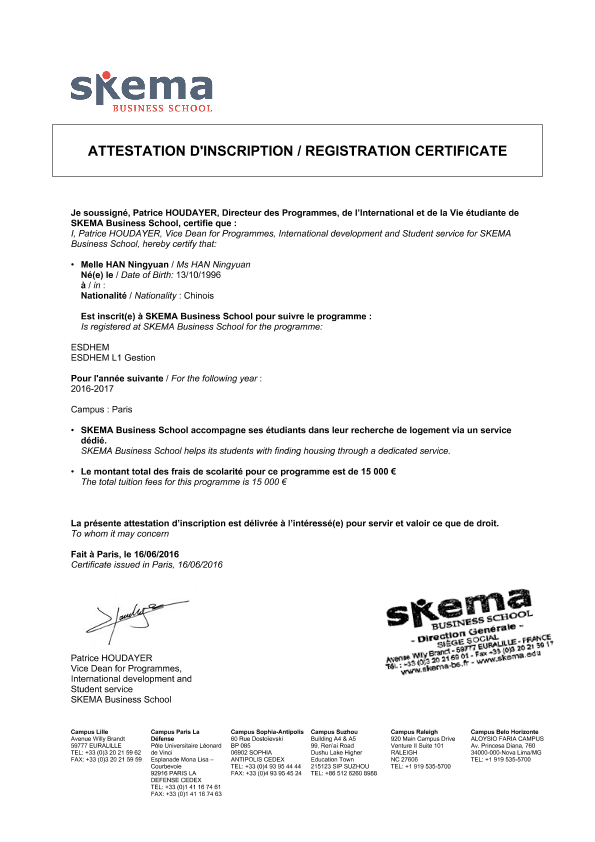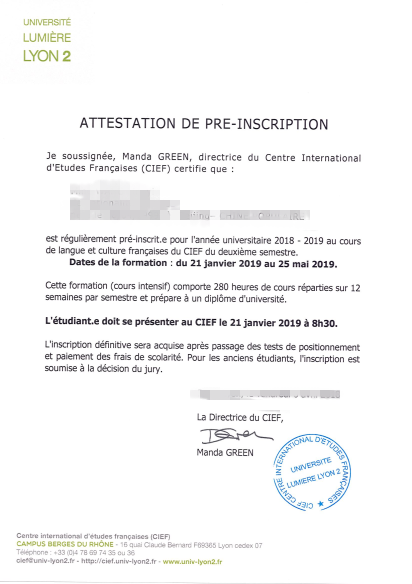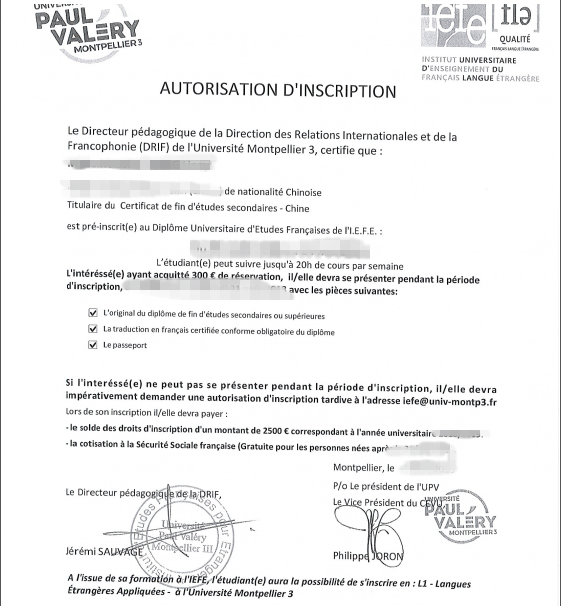9月GMAT阅读机经:法国印刷术.
2017-08-10 707阅读
9月GMAT机经换库了,现在就由小编来为大家整理九月份的GMAT阅读机经整理,下面是关于GMAT阅读机经的相关问题,分享给大家,希望对大家有所帮助,文中观点仅供参考。
本月原始V1 【By 摇曳的叶子】
将illustrate在19世纪被引入Franch的时候,有some critics 说了一大堆。
第二段有一个叫Maryer的人follow了上面一个人的观点,觉得有一种industrial作画颜料(好像叫什么chemical fingerprint)既便宜又比较好,具体说了一些优点(这里有题目,问Maryer为什么appreciate这种颜料)。但是这种染料后来逐渐变得unpopular了,说明原因....(没有题目)
考古 【By 元叔】
For artists and writers alike, book illustration’s threat was double: it challenged the fine arts via their shared visual medium, and literature through the shared pages of the book. As such, critics needed a way to invalidate illustration’s artistic claims on both fronts. They did so by codifying the genre as industrial and mercantile, a lethal combination. The landscape painter Raoul de Croy (1802-79) led the charge, chastising the press for its use of what he described as ‘‘crude wood engravings’’ that transform ‘‘beautiful vignettes’’ into ‘‘black ink stains.’’ Here de Croy sets up a polarity between wood and metal engraving: the former being ‘‘crude’’ and ‘‘mechanical,’’ the latter representative of ‘‘this art so perfect, so difficult, so worthy of encouragement.’’ De Mercey followed suit, noting the ‘‘difficulty’’ and ‘‘length of work’’ involved with copper and steel engraving, as well as etching. Lithography and wood engraving, on the other hand, were ‘‘much less difficult to produce and much less expensive.’’
Although the Romantics, and de Croy himself, championed lithography as a spontaneous, emotive medium that captured the visible traces of the artist’s pencil— metonymic rerences to the artist’s thoughts and emotions the lithography of the 1840s fell on the side of ‘‘popular’’ art more often than not, as it was primarily used in the press and for low-end prints, with subject matter ranging from political and social caricature to licentious images. Accordingly, the medium took on the attributes of its publication venues and content: mechanical, commercial, destined for a popular audience.De Mercey’s and de Croy’s distinction between lithography/wood en- graving and metal engraving/etching establishes a series of dichotomies— mechanical versus hand-produced, mass-reproduced versus limited reproduction, industrial versus individual creation—which correspond to Bourdieu’s breakdown of the cultural field. These distinctions also testify to the very real nature of image reproduction in the nineteenth century: metal engraving was a lengthy and costly procedure where the bulk of the work was often done by one engraver, while wood engraving and lithography were much less expensive and easier to produce, with individual authorship giving way to the collaborative process of publishing illustrated newspapers and books. These differences fuel de Mercey’s and de Croy’s attacks on book illustration in that each critic attributes value to time, cost of production, and individual workmanship: thus metal engraving and etching are placed at the high end of the aesthetic scale, while lithography and especially wood engraving fall to the bottom. Yet ironically, by placing illustration within the academic hierarchy of mediums, de Mercey and de Croy suggest that it is gaining not only economic but also cultural capital. Despite its ‘‘crude’’ and ‘‘mechanical’’ nature, it has earned a place on the artistic ladder, albeit the lowest rung.
Critics reinforced the high-versus-low art dichotomy by adding commercialism, what Bourdieu qualifies as the ‘‘generative principle’’ of the field of cultural production. According to de Mercey, publishers turn to book illustration because they want ‘‘to produce bargains, common goods.’’Il- lustration is a step backwards towards ‘‘the mercantile civilization of America’’; ‘‘no other century has pushed as far as ours this debauchery of illustrations commercially conceived’’; ‘‘literature has become a counter, a boutique open on the street, with display windows and a sign.’’ In short, illustration is not art; it is simply a means to ‘‘build a fortune.’’
De Mercey plays on a related fear when he protests that both wood en- graving and lithography ‘‘largely contributed . . . to the democratization of minds [esprits].’’ De Croy grants that one may applaud the press’s forts to ‘‘bring the taste for the arts to the poor person’s home,’’ but this must not be done by way of ‘‘assassinating the fine arts’’: ‘‘Where, thus, will good taste find ruge if we inundate the poor public in such a manner?’’ De Croy’s metaphor of a flood or wave of images signals the growing anxiety that illustration will eventually drown out or homogenize the visual arts. De Mercey and de Croy fear not wood engraving and lithography per se, but rather their infiltration and subversion of high art. And in many ways book illustration did just that, for as Philippe Kaenel notes, the majority of visual artists from 1830 to 1880 sold images to newspapers and booksellers at one time or another, blurring the boundaries between painting, engraving, caricature, and illustration. As Kaenel points out, the entry for the
letter ‘‘d’’ in Marcus Osterwalder’s Dictionnaire des illustrateurs (1983) in- cludes ‘‘Dargent, Daubigny, Daumier, Debucourt, Decamps, Delacroix, Denis, Derain, Deve ?ria, Dore ?, Durf, Du Maurier, etc.’’66 When such a varied collection of painters, caricaturists, and engravers illustrate books, how does one distinguish between the artist and the commercial hack?
The same question arises in the context of literature, for as de Mercey and fellow critics argue, book illustration’s attack on the artistic field targets both visual and literary aesthetics. The critic Elias Regnault warns that in order to maintain literature’s integrity, ‘‘the publisher must bring to this new path sureness in judgment, a purity of taste, which raises him to the ranks of an artist, if he doesn’t want to descend to the role of sketch sales- man.’’ Regnault cites a number of cases where the publisher fills books with too many images, poor quality images, or images that do not correspond to the text. Worst of all is the publisher who ‘‘brazenly changes the first words of a paragraph in order to offer hospitality to his illuminated letters.’’ Here Regnault targets publishers as the instrument behind illustration’s degradation of literature: ‘‘their most common error is to take on the airs of an artist vis-a`-vis the public and to reserve their merchant ways for the writer.’’ The publisher’s true crime is that he usurps the writer, taking over the book via illustration, all under the guise of ‘‘art’’ although he is in fact a salesman in artist’s clothing.
For de Mercey, illustration’s threat to literature is even greater as it not only corrupts aesthetics but, more importantly, it distorts the reading process by substituting image for word. As he explains, there is a certain ‘‘vague- ness’’ inherent to ‘‘verbal painting’’: ‘‘Nothing is precise, the reader’s mind is constantly required to call forth its reminiscences and its personal emotions in order to interpret, as it were, the poet’s idea.’’ But illustration makes this kind of creative individual reading impossible. The reader be- comes lazy, the mind weakened from the passive viewing of images: ‘‘When the illustrator gives precise forms to the writer’s reveries, his stories, it necessarily happens that the mind is no longer accustomed to understanding these stories, these reveries, unless in the clothes that the painter has dressed them. The illustrator thus substitutes himself for the poet; he imposes his personal interpretation in place of that multiple and living interpretation that each person can create according to his imagination or his nature.’’
Yet despite the critics’ attempts to discredit illustration, de Mercey, de Croy, and Regnault actually attest to its success, in that their articles amass a body of critical discourse devoted to wood engraving and lithography. By making book illustration a topic of discussion and interpretation, the critics actually validate its entry into the cultural field. What is more, the critics’ fervent attacks suggest that illustration succeeded at destabilizing, however temporarily, the cultural field. The threat to aesthetic hierarchies was real.
V1关键词wood engraving, artistic...France... 有一问是说第二段提一个人(De Mocoy貌似)是为了干嘛? V2阅读有一篇讲什么graphic illustration....里面提到了什么印刷在wood 或metal上的 然后法国有个人叫什么re.xxxx的 反正讲来讲去没看懂多少。
V3不确定是不是这里的)貌似一种印刷和出版相关的
P1.讲了貌似法国的一种印刷在publication中的应用, 初始遭到critics的不认同(好像是artistic不是上非常有价值之类)云云.这里有个对比部分和金属蚀刻(etching)相关的对比. 然后艺术家怎么怎么了(总之是正态度)
V4:講法國有關什麼art的,是book illustration被criticize, 兩段文, 後段關鍵字lithography 幾乎整篇都在講printed art 還有各種印刷方法(木工..鐵工...有說明鐵工耗時所以lithography好使的樣子..)
V5: wood那道我怎么记得看到过 说17century france的 一个艺术家用这种方法 第二段说的是另外个高等社会bourgeois的另外个人说的话好像说这种比较省钱 报纸还是神马的反正用的范围广 还说对政治有帮助咩 还说了个silver还是什么的很复杂的engraving
V6: illustrations受到critics的批评,artists怎么怎么,提到了一个具体艺术家(名字很长貌似法文名字)说wood和mental 的engraving,wood的不好,后者好。第二段还说这个engraving,什么lithography什么,说steer的less dufficult.....最后说lithograpgy应用到popular side,用于publish newspapers,ranging from political issues to social issues。
V7: Book illustration. 还有讲印刷啥的东西。
第一段:某个鸟人很支持Copper Engrave啥的
第二段:另一个人提出一些不同观点,说木头什么比金属的好。因为比较便宜,且好做。
V8: 法国关于illustration 其中有类型应用(主要应用于newspaper的politics 和
Social issues类?)
V10: 第2段 法国的什么人讲 STEEL WOOD 这些方法没有很难 而且花费小 然后还说印刷是一直持续怎么着的,还有第2段开头提到很长的法国名字 问那人的观点
V11: 法国的艺术家,book illustration。。。。一个人创造了一个新的方法,然后另一个人跟着学,然后这种方法就成了popular,导致了本来的一种方法沦落到报纸印刷才用的
V12: (700 v36)还有那个etching 第一段是说de croy?觉得wood engraving不好,XX技术好,具有艺术性。 第二段是说 某派人觉得wood 挺好的好像。但是浪漫派和de croy喜欢的litography 最后还是变成low-end 用来传播政治阿社会啊的主观事情(这里有题)
整理分析 【By 元叔】
※ 主题思路:
金属etching法(腐蚀)和木头雕刻哪个更加受欢迎
金属好:技术好,有艺术性;
木头好:操作小,花费小;
※ 段落大意:
第一段:金属腐蚀法好:
Book illustration的出现引来了批评critics。 其中典型的就是一位叫DE M (DC)的人对此持负面态度。(这里搞清楚DC是批评的还是对批评持负面态度的),这个人认为metal etching 法 与wood engraving 雕刻法 (这里应该有减少两者的一致性,因为后面又出对两者一致性的题),这两者相比,wood engraving简直就是污垢(就是不好就对了)而metal etching“好完美”,因为技术好,又具有艺术性
第二段:木头雕刻法好:
又出来一派人说wood好,同litography一样经济方便。因为wood engraving的操作less difficult,而且花费小,中间貌似穿插了与copper的对比(有题),wood & lithography are both less difficult in use and less expensive. Lithography was initiated for taking artists’ pencil works(这句意思如此,语言不是很准全)。然后举例说wood印刷在当时的应用应该是广泛的,因为同lithography(平板印刷术)一样经济又方便,最后说lithography应用到popular side,用于publish newspapers,ranging from political issues to social issues,然后又问DC的观点,浪漫派和DC竟然也喜欢lithography,认为各种美好,尽管最后还是沦为传播政治等话题的载体。Although DC championed lithography in the artistic and emotive domain, it ultimately fell to the low-end serving for political and social blabla.(不是domain这个词,但就这意思,注意体会championed的意思)
※ 可能变体版本:
阅读考了法国印刷那篇,印象很深刻。文章很短,但是有些晦涩。
第一段讲了19世纪illustration的出现引来了很多的cirtics。然后讲一个人认为用木头(lithography)比用metalengraving的方法好。注意这一段有道题问,19世纪大多数人对illusration 的看法,大家注意认真读开头的两句话。答案就在那两句话里,句子有些不好懂。
第二段开头说,后来的人还是人为metal engraving的方法更好,但是lithography开始越来越流行普及了,因为低廉的造价,和方便使用。最后一句是lithograpgy应用到popular side,用于publish newspapers,ranging from political issues to social issues。)
※ 题目:
1)主旨题
我选了介绍不同的方法。
2)有一问是说第二段提一个人(De Mocoy貌似)是为了干嘛?
3)最后还是变成low-end 用来传播政治阿 社会啊的主观事情(这里有题)
4)这里有个题目比较纠结,就是关于第二段的那个人的观点的,那个人认为金属的印刷不好,又贵,而木头的比较好。 下面那个不是他支持的
其中三个选项文章很明显提到,但还有两个不知道选哪个,一个是卖的贵,还有一个是用此种方法做出来的venue。我选了后一种,文章里没看到。
5)说通过文章,可以推断出哪个是正确的?
好像选LI那个印刷术很盛行 之类的
6)还有第2段开头提到很长的法国名字问那人的观点
7)问19世纪lif方法被人如何看待?
8) book illustration在当时怎么样?/第一题问你第一段book illustration能infer出啥?
V1我选了被批评家认为for 工业。
V2 (by 往届狗主760 V42)
选项有
A) book illustration was used for industrial publication
B) it is not made of metal
C) used for social and political publication
D) critics ignore illustration
E) can be easily created byartists
大概选项就是这个意思,顺序不确定,总之我觉得所有选项都不靠谱,jj里有人选了for industrial publication,但是我也觉得不对啊,原文貌似说的是criticizeit as industrial and xx反正我理解的是批评家觉得这种方方过于工业化和简陋,可能我理解错了吧,最后纠结了半天我选了不是made of metal的那个好像。。。
9) 还有一个问到浪漫派的观点什么的
我没太多时间看,就选了那个artist可以spontaneously create他们作品的那个.
10)有个问题是关于lithography的细节题
我记得答案好像是lithography开始的时候应用没有那么广,因为最后一句说到了后来lithography才得到了广泛的应用。这是我遇到的最坑爹的一篇阅读,文章不长,但是浪费很多时间在上面。
※ 备注
题目不难,文章跳跃度有点高,我就问了三题。
以上就是对于9月GMAT阅读机经的相关介绍,希望对大家备考GMAT考试有所帮助,文中观点仅供参考。
留学咨询
更多出国留学最新动态,敬请关注澳际教育手机端网站,并可拨打咨询热线:400-601-0022
留学热搜
相关推荐
- 专家推荐
- 成功案例
- 博文推荐

Copyright 2000 - 2020 北京澳际教育咨询有限公司
www.aoji.cn All Rights Reserved | 京ICP证050284号
总部地址:北京市东城区 灯市口大街33号 国中商业大厦2-3层









王伟燕 向我咨询
行业年龄 9年
成功案例 4345人
澳洲中小学留学(公立和顶级私立) 商科:金融、会计、MBA、人力资源管理、酒店管理、市场营销 工科:电子电气工程、计算机科学、化学工程、机械工程、环境工程、材料工程、工业 工程、建筑规划与景观、土木工程、石油工程、食品与营养、生物医学 理科:数学与统计、物理、化学、药学、地理 文科:传播与传媒、经济学、法学(LLM&JD)、社会工作、、社会学、心理学、教育学、广告学、对外英语教学(TESOL) 艺术类:影视及编导类、美术与设计类、音乐、艺术管理、艺术史
匡帝-天津 向我咨询
行业年龄 13年
成功案例 3566人
高分学生名校申请,一般学生发掘优势申请,大龄,低分学生的留学移民指导。